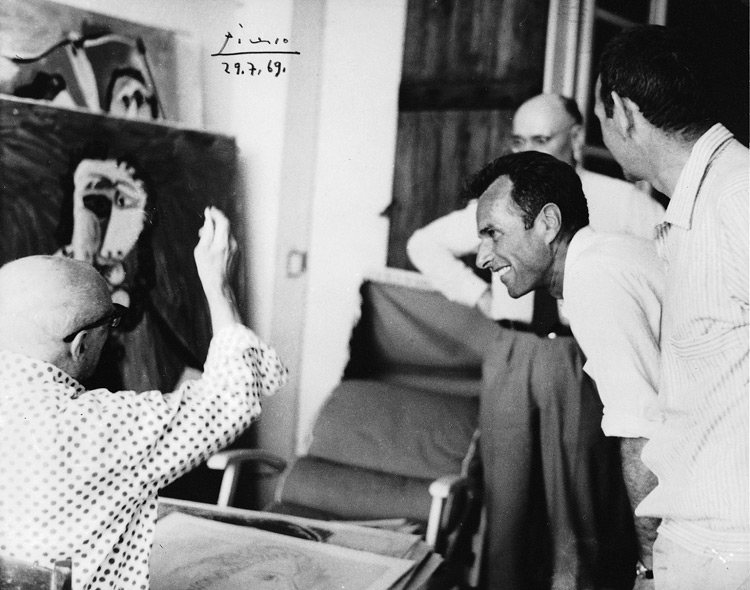Jean Planque and Pablo Picasso.
 |
| Ernst Beyeler and Pablo Picasso at Mougins, 1969 |
Picasso, Braque and many other modern artists collected African art and were highly influenced by African masks during their cubist period (1907-1909). Beyeler also collected African art, probably as an attempt to grasp the early influences on cubism, which he admired and collected.
G. David Thompson and the 100 Klees.
 |
| G. David Thompson observing a Giacometti sculpture |
Anecdote.
Beyeler's visit in Pittsburg also shows his attachment for a painting he cherishes: Kandinsky's Improvisation 10. He sold this painting once to a newly rich housewife. Beyeler likes to recall this woman's naïvety when she bought Kandinsky's Improvisation 10 without actually knowing Kandinsky and art in general. This woman had a fresh attitude towards art and was genuinely moved by a work of art. The idea of emotion facing art is central in Beyeler's attitude as a collector. Indeed, he has always claimed his high standards as far as quality was concerned -as opposed to quantity-. Later Beyeler bought that painting back for his personal collection.
David Thompson wanted to trade his hundred Klee collection for a certain amount of money that Beyeler did not posses when they met. Beyeler offered money, a Cezanne and a Matisse but Thompson wanted Improvisation 10 ! Beyeler almost missed the deal because he refused to give Improvisation 10 away. This is the point when the collector proves to be stronger than the salesman.
 |
| Alberto Giacometti by Henry Cartier-Bresson |
Two years after his first visit to Thompson Beyeler buys his Giacometti collection. Beyeler was fascinated by the artist's work and kept nine sculptures for his private collection. The picture below shows Beyeler's tribute to Alberto Giacometti's works. Beyeler was photographed with Giacometti's sculpture. The photography is a hint to Cartier- Bresson's picture of Giacometti in his studio.

No comments:
Post a Comment